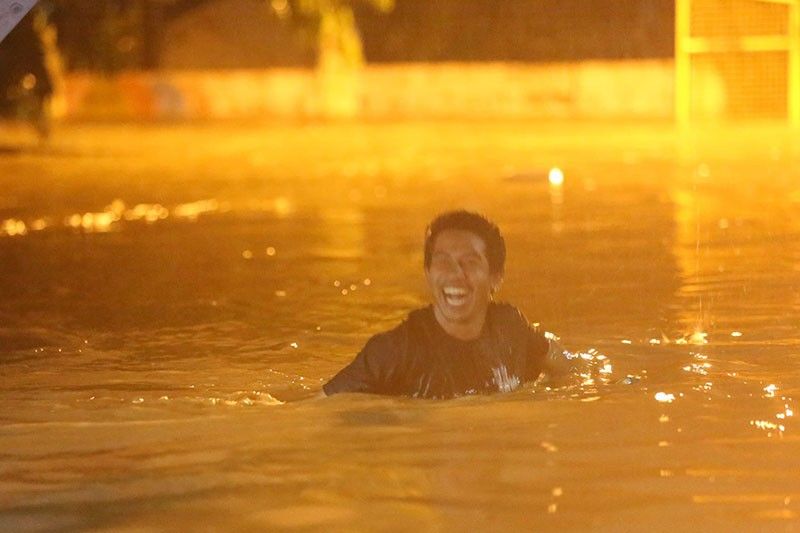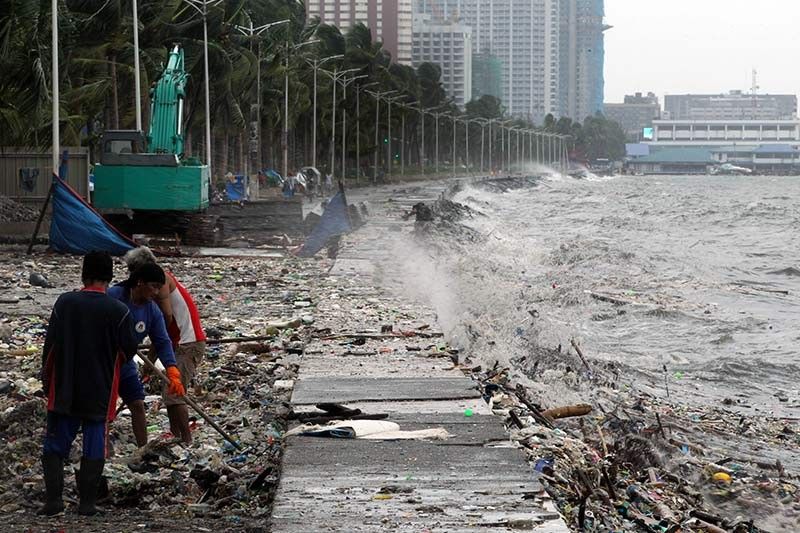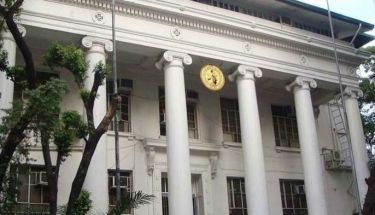Filipino spirit: How citizens and government responded to the habagat floods

MANILA, Philippines — A comment on the Filipino people's resilience over the weekend revived an online conversation on how it has been "romanticized" to stop citizens from demanding better infrastructure and services from the government.
As heavy moonsoon rains submerged entire streets and brought traffic to a standstill over the weekend, here are some ways Filipinos responded to the rains:
National government
On August 11, Saturday, the National Disaster Risk Reduction and Management Council issued a memorandum raising the alert status to “Blue” — that means half of disaster response personnel and equipment must be on standby.
Since past noon last Saturday, the NDRRMC has since issued seven emergency alert and warning messages.
By Sunday morning, NDRRMC was on red alert, which according to the National Disaster Response Plan, means "all human and material resources are made available for duty and deployment."
According to the Situation Report released on Monday morning, the Department of Social Welfare and Development’s Disaster Response Operations Monitoring and Information Center has been monitoring and coordinating with its field offices for disaster preparedness.
The Department of Health, meanwhile, has raised its code alert and has been at the ready for any untoward incident and update on response.
Affected Department of Public Works and Highways District Engineering Offices has also prepositioned available and operational equipment that may be needed for rescue and relief operations.
Philippine National Police Director General Oscar Albayalde, for his part, said on Monday that more than 4,000 police officers have either been deployed or are on stand by for search and rescue operations.
He added that the police will help the Department of Trade and Industry in enforcing price freeze on basic commodities in areas under state of calamity, to help ensure food security and consumer protection.
In response to Typhoon Sendong in 2011, the government created Project NOAH. It sought to “provide high-resolution flood hazard maps and install 600 automated rain gauges and 400 water level measuring stations for 18 major river basins,” according to its website.
On Jan. 29, 2017, the project’s executive director, Mahar Lagmay, said that the program was scrapped due to “lack of funds.”
Project NOAH has since been downsized and is now being managed by the University of the Philippines.

RELATED: Duterte's aerial inspection of flooded areas cancelled, Palace says
Local government preparations and response
When Tropical Storm Ondoy hit nine years ago, parts of Cainta and of Marikina City were submerged for days.
In a Facebook post, Cainta Mayor Keith Nieto outlined what the LGU has done over the years to mitigate flooding: From building an interceptor to remove water from certain areas to the elevation of roads in the municipality.
Nieto said that 13 cistern tanks have been built this year to “augment water capacity rate absorption of the villages along Imelda and Ortigas Avenue and mitigate flooding there.”
The Cainta mayor added that the LGU “will start rebuilding the Munting Dilaw Dike...by putting gravity walls from the creek in Marcos Highway to Ortigas Avenue.”
“The year after, we should see the construction of our own flood gate at the Floodway with a powerful pump machine so we can prevent the backflow of rain water emanating from Metro Manila,” he added.
The local government of Marikina, meanwhile, earned praises when photos of its evacuation center circulated online.
Residents from Malanday, Marikina were evacuated last Saturday and modular tents were set up to ensure the privacy of families seeking shelter.
LOOK: Residents from Malanday, Marikina enjoy their privacy with the help of modular tents at the city's evacuation center.
— Philstar.com (@PhilstarNews) August 12, 2018
Marikina City Mayor Marcelino Teodoro has suspended classes in all levels for Monday, August 13, amid the continuous downpour. https://t.co/QVwnGflBMi pic.twitter.com/iLlQvY8esM
Social media users also pointed out that the tents were devoid of faces and names of politicians, which used to be commonplace on government projects.
The local government of Quezon City, for its part, has put up pop hut emergency shelters at Barangay Bagong Silangan covered court for displaced residents.
LOOK: Quezon City puts up pop hut emergency shelters at the Barangay Bagong Silangan covered court for the use of residents who evacuated as floodwaters rose in their area.
— Philstar.com (@PhilstarNews) August 13, 2018
Here are some scenes in the aftermath of the intense monsoon rains: https://t.co/QVwnGflBMi pic.twitter.com/dYAwcXqQuc
RELATED: IN PHOTOS: Monsoon downpour messes with wedding, floods streets, spawns sea of garbage
Citizens' response
Social media users also by coordinated efforts through #RescuePH.
Users created a Google document collating information on persons who needed rescue and their conditions to facilitate quicker rescue response.
Schools and malls near flood-stricken places were also quick to open their gates to provide shelter for those stranded.
Several groups have also coordinated efforts to set up drop off centers for relief goods. Calls for volunteers continue as more families start to return to their homes.
- Latest
- Trending





























